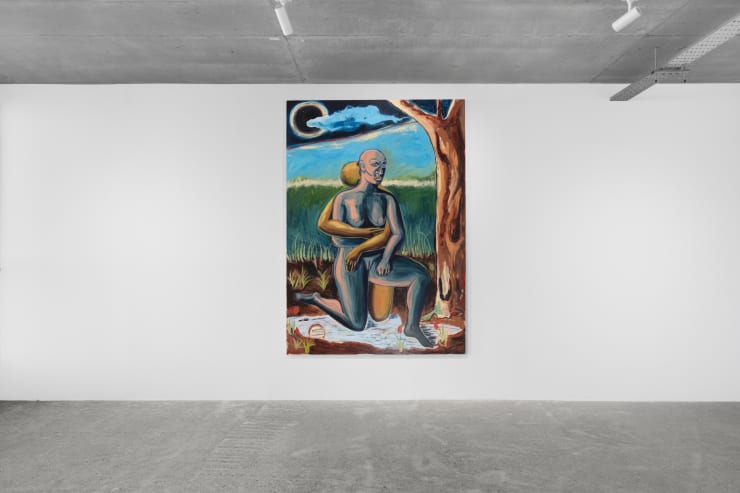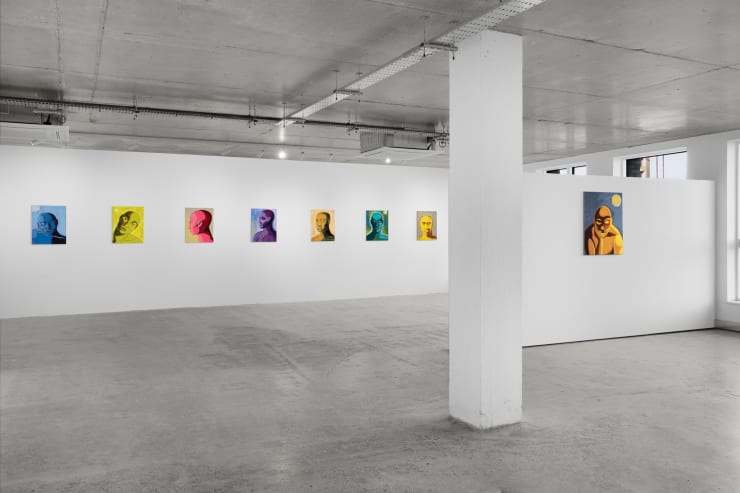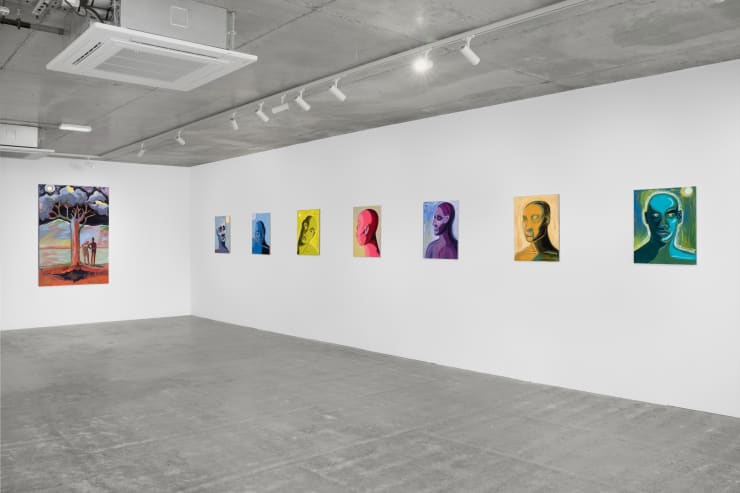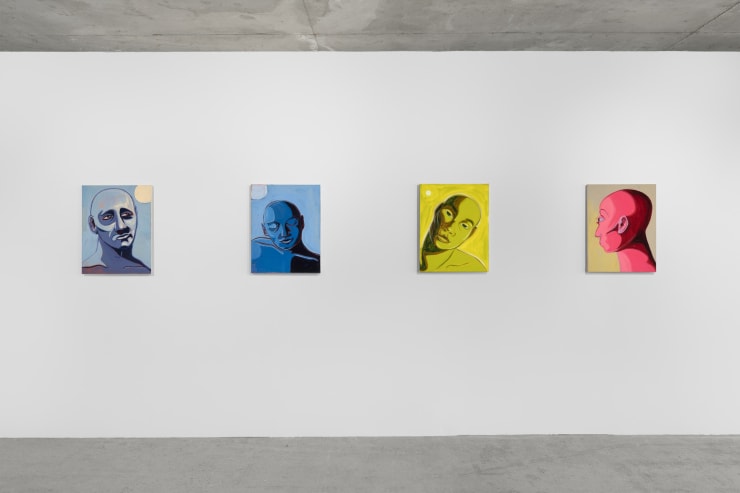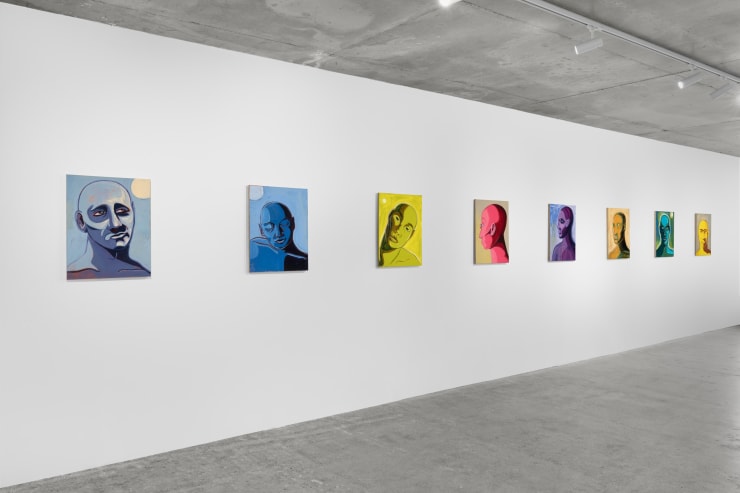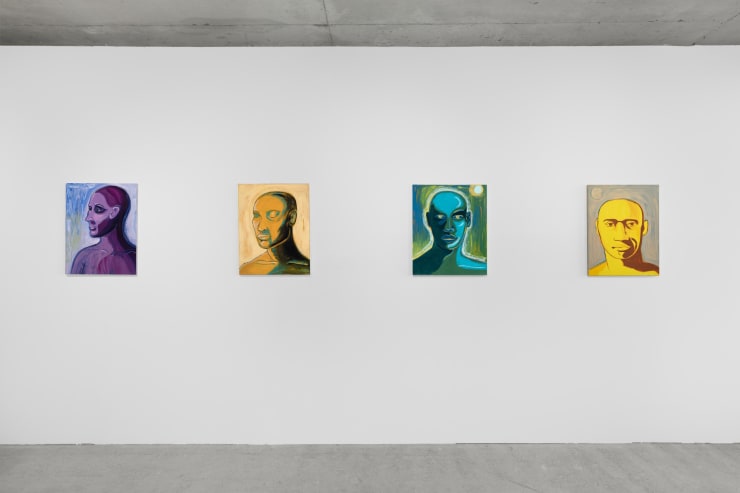The Lunatics: KEMI ONABULÉ
-
-
Press Release Text
Kemi Onabulé’s The Lunatics (2023) explores ways in which the moon has shaped mythology, society, politics – from Nigerian visual culture to European imperialism, British environmental folklore to histories of mental health, Ancient Greek legends to sci-fi fantasy. The series title evokes the formerly common belief that the movements of the moon could induce madness: a series of otherworldly humanoid figures shimmer and glisten under lunar light. The characters, saturated by surreal colours, range from the penetrating close-cropped stare of Entrapped (2023) to the nocturnal embrace of two figures under a tree in Moon Shines High (2023). The visible oil brush strokes burst with a constantly shifting and mutating energy, as though its forms are perpetually on the cusp of dissolving and reforming anew. Other paintings have a reflective calm, like the serene closed eyes of a head in Pause a Moment (2023). Self Portrait as a Lunatic (2023) gazes meditatively at the viewer: head turned, flesh lit from a celestial glow. She Weighs Heavy On Him (2023) addresses the recurring belief in many cultures around the world that the moon exerted an influence on earthly life, and a mythic symbol often gendered in ritual practices.
In prehistoric societies around the globe, the moon was used to organise timekeeping (such as months) or mark important festivals. Many of these groups, living off the land, appealed to the moon as a deity in the hope it would help provide abundance or fear it could inflict harm. Such thinking did persist in later centuries: in Europe certain crops were harvested or plants cultivated at particular lunar phases, and some surgeons felt their operations were best carried out in relation to celestial orbit. But for the most part, with the enclosure of common land and persecution of paganism at the beginnings of colonial capitalism (which would later develop into industrialisation), alienation from the moon’s influence grew in European cities. It was still used as a scientific instrument: sailors employed eclipses to circumnavigate oceans with the onset of imperialism, while science fiction would use the moon as a site to project colonial fantasies. But Onabulé’s work returns to and reanimates much older lunar theories: presenting a picture of the natural world as enchanted with myth and magic. Such animated and lively landscapes stand in defiance of later political systems which strove to dominate and master nature, to turn it into a thing to be extracted for profit. At a time of climate breakdown, economic crisis, and resurging imperialism, Onabulé’s luminous paintings call for different ways of being in and inhabiting the world.
- Dr Edwin Coomasaru
-
Obras
-
Installation shots
-
Press
-
Eventos
-
Virtual Exhibition













